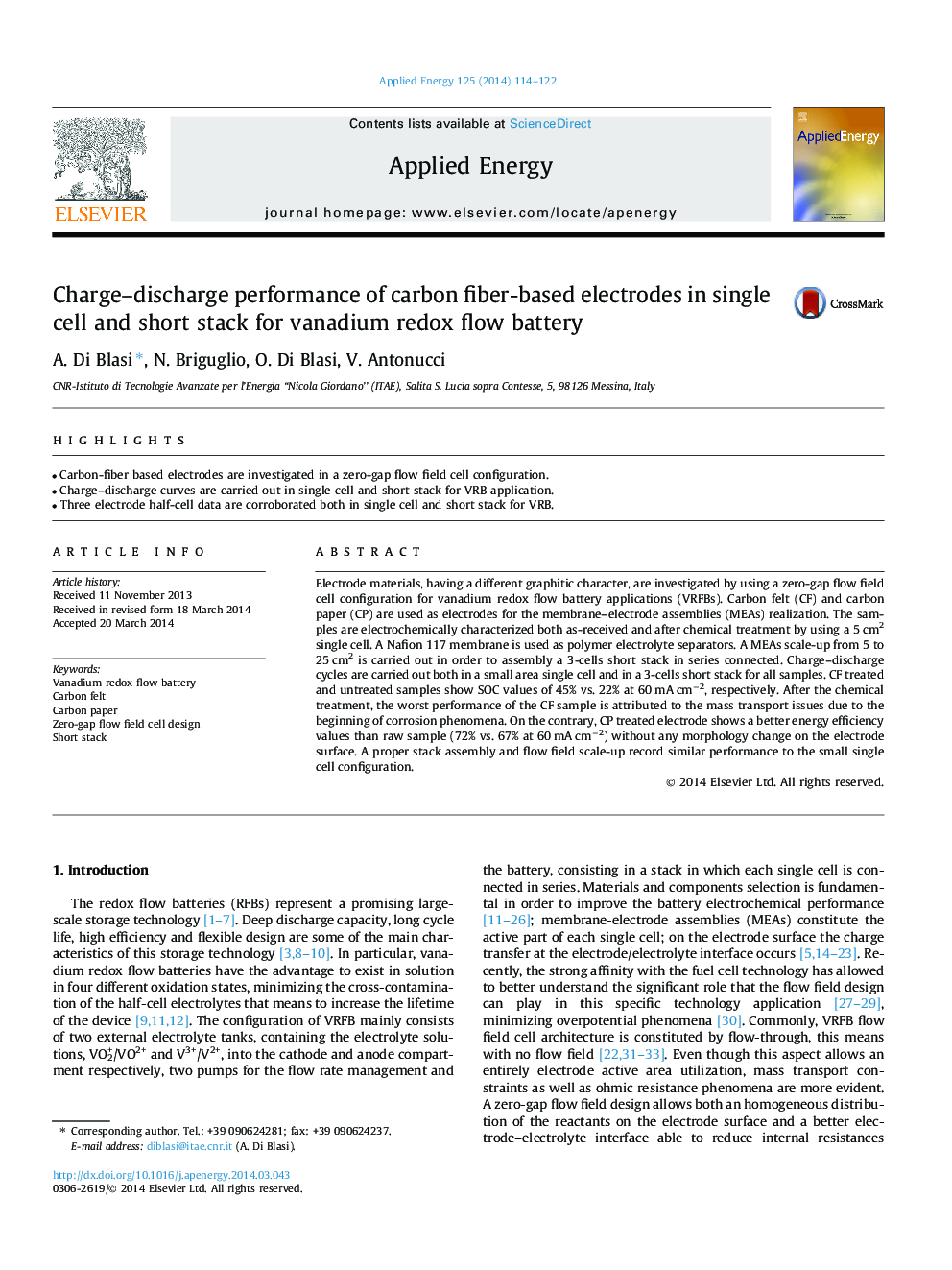| Article ID | Journal | Published Year | Pages | File Type |
|---|---|---|---|---|
| 6690278 | Applied Energy | 2014 | 9 Pages |
Abstract
Electrode materials, having a different graphitic character, are investigated by using a zero-gap flow field cell configuration for vanadium redox flow battery applications (VRFBs). Carbon felt (CF) and carbon paper (CP) are used as electrodes for the membrane-electrode assemblies (MEAs) realization. The samples are electrochemically characterized both as-received and after chemical treatment by using a 5Â cm2 single cell. A Nafion 117 membrane is used as polymer electrolyte separators. A MEAs scale-up from 5 to 25Â cm2 is carried out in order to assembly a 3-cells short stack in series connected. Charge-discharge cycles are carried out both in a small area single cell and in a 3-cells short stack for all samples. CF treated and untreated samples show SOC values of 45% vs. 22% at 60Â mAÂ cmâ2, respectively. After the chemical treatment, the worst performance of the CF sample is attributed to the mass transport issues due to the beginning of corrosion phenomena. On the contrary, CP treated electrode shows a better energy efficiency values than raw sample (72% vs. 67% at 60Â mAÂ cmâ2) without any morphology change on the electrode surface. A proper stack assembly and flow field scale-up record similar performance to the small single cell configuration.
Related Topics
Physical Sciences and Engineering
Energy
Energy Engineering and Power Technology
Authors
A. Di Blasi, N. Briguglio, O. Di Blasi, V. Antonucci,
